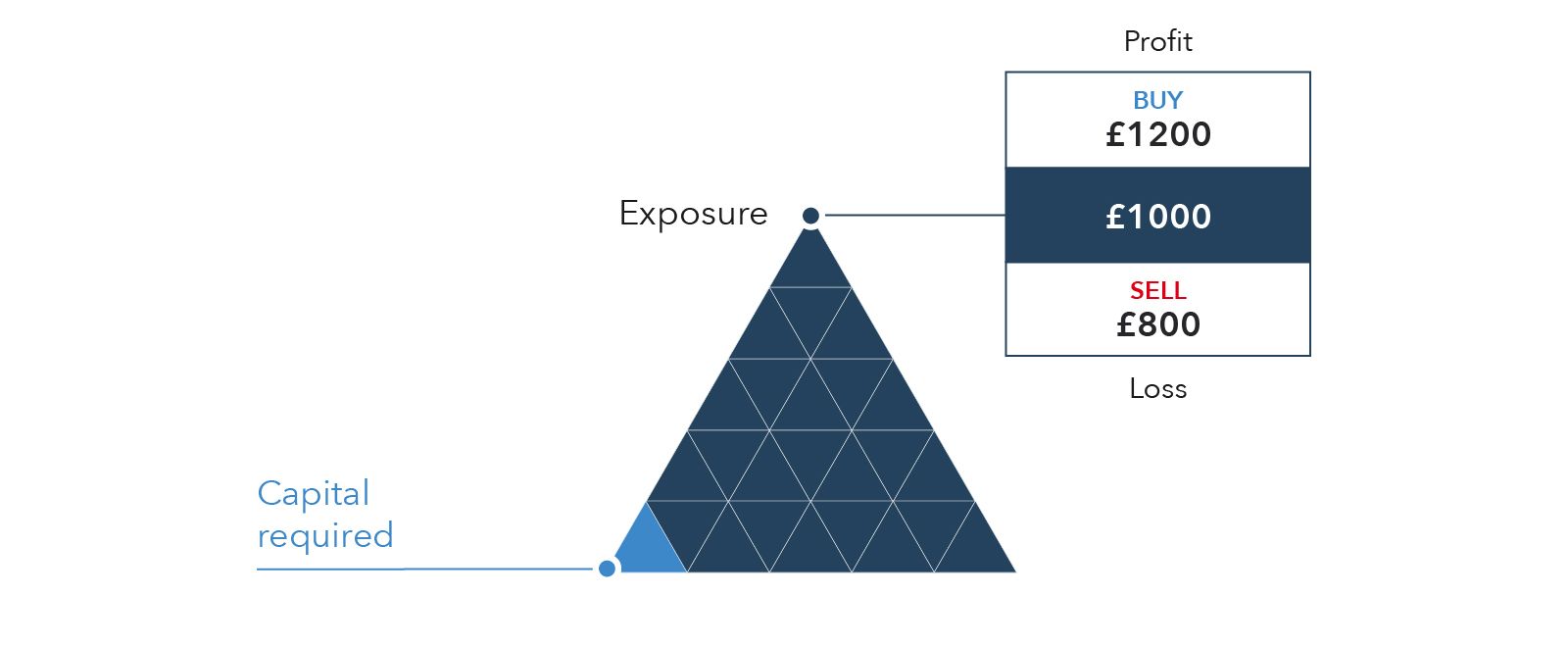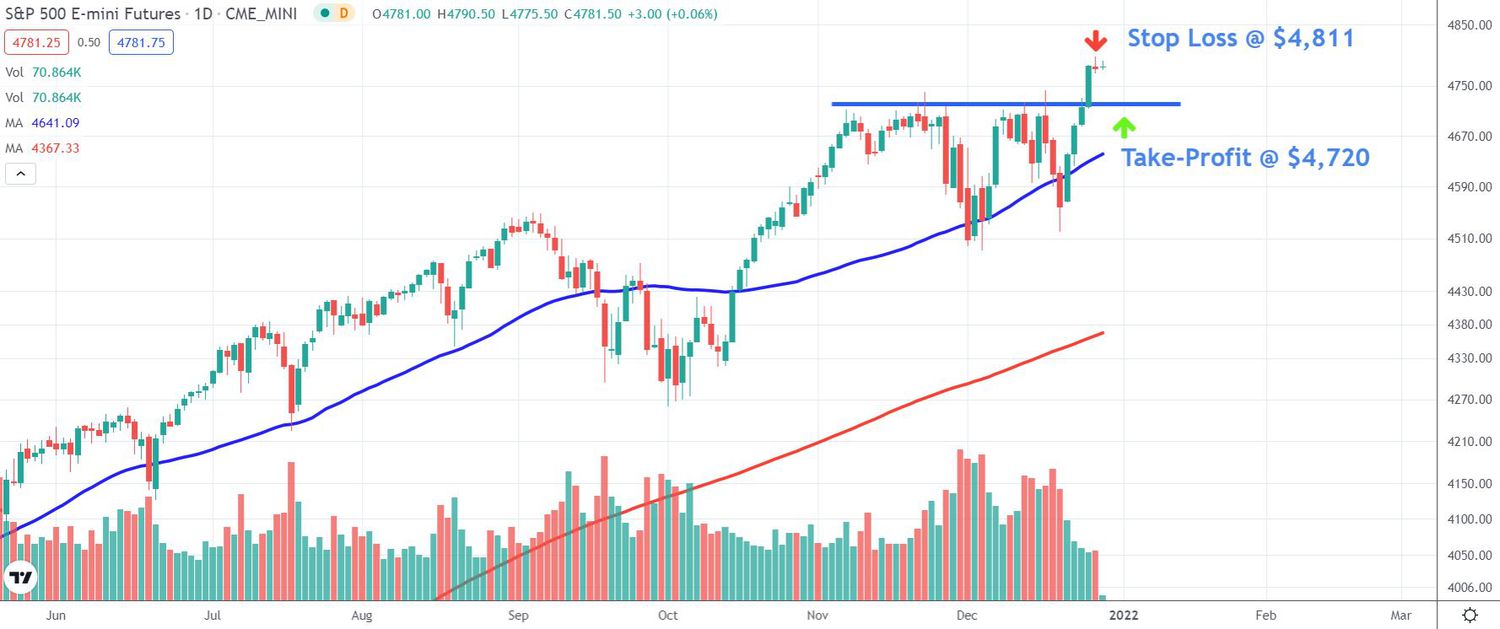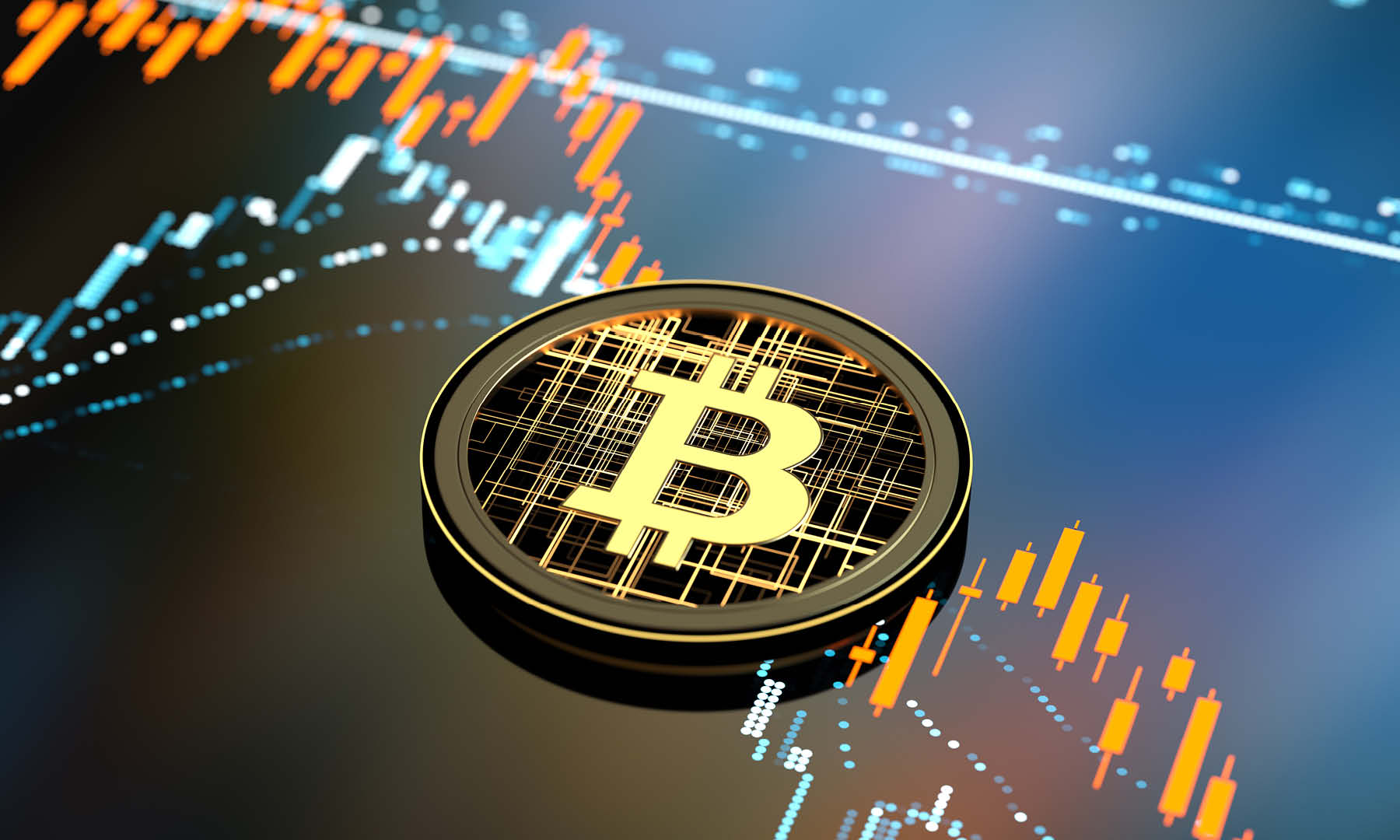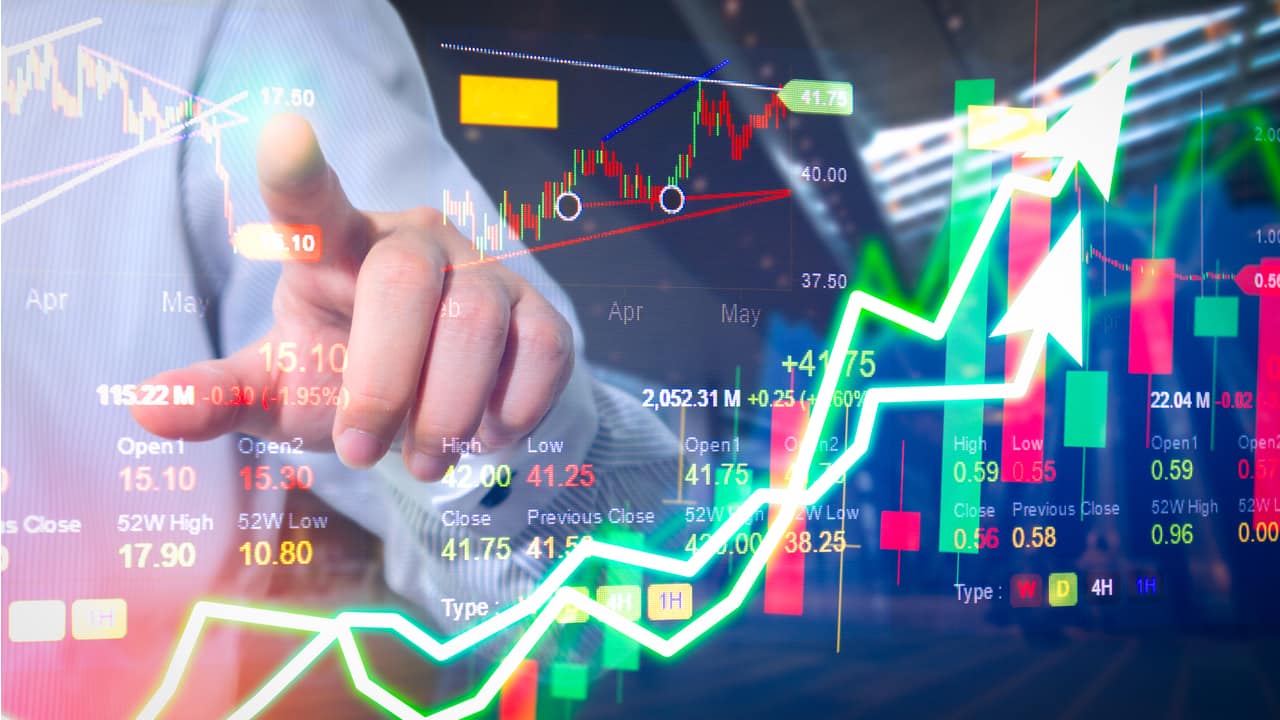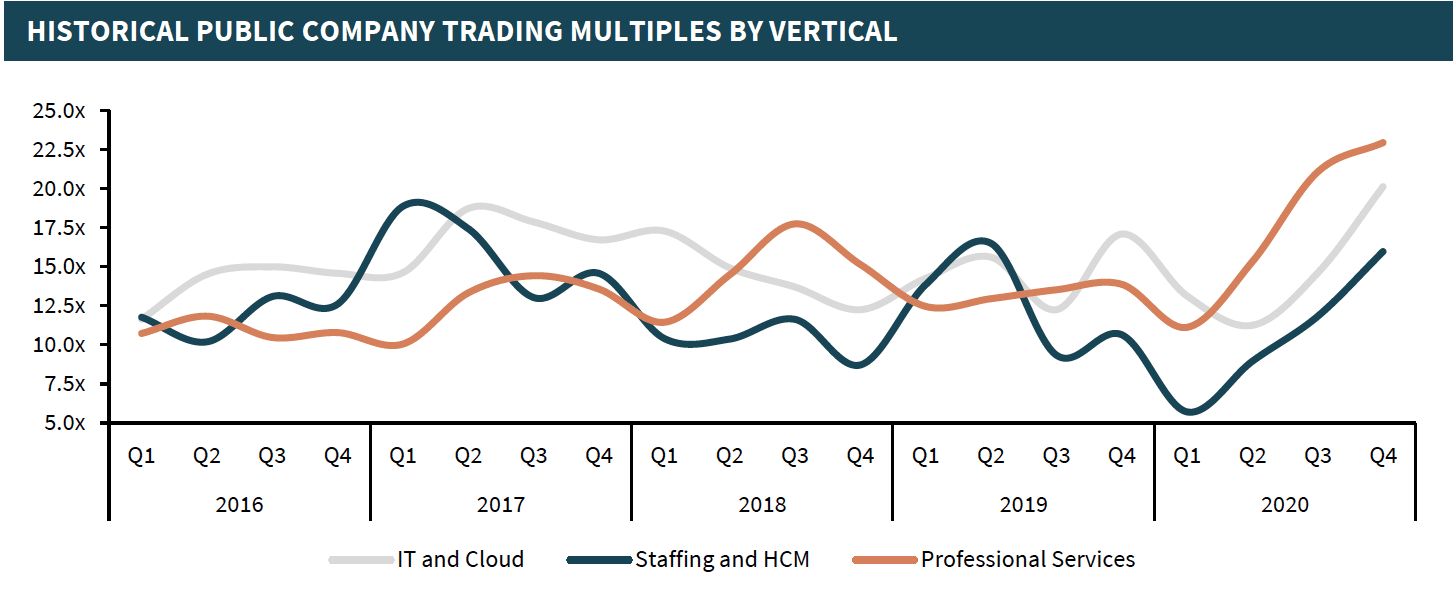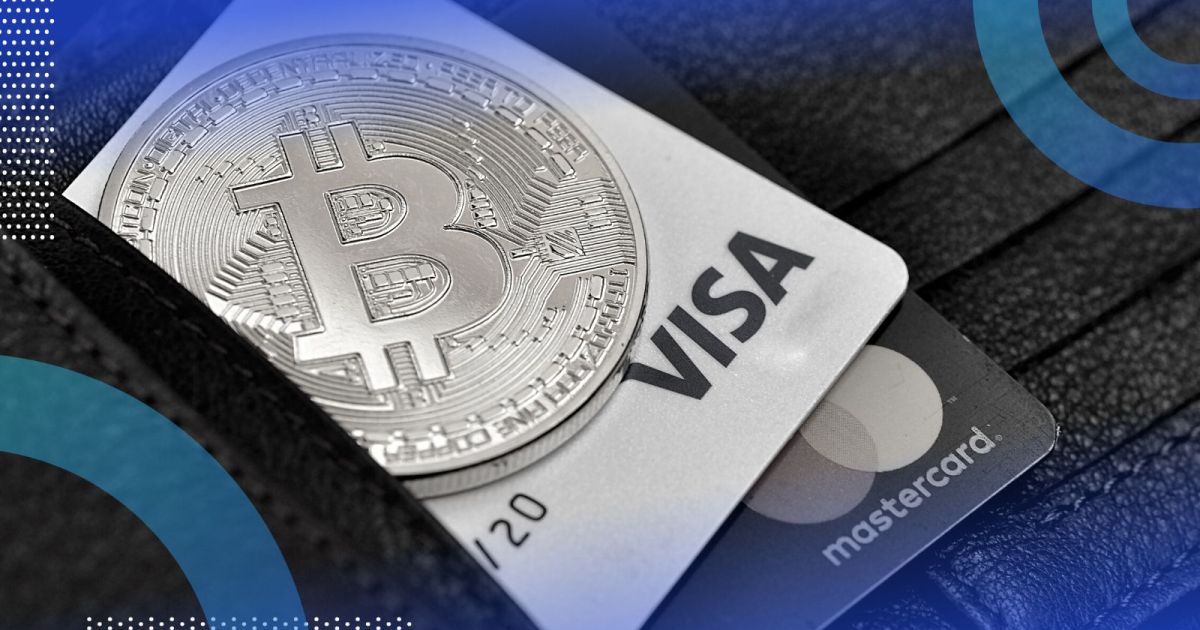Introduction
Welcome to the world of futures trading! In this article, we will explore the exciting and dynamic world of futures trading – what it is, how it works, and the key players involved. Whether you are an experienced trader or just getting started, understanding the basics of futures trading is essential for success in the financial markets.
Futures trading is a highly popular and globally recognized form of investment, allowing traders to speculate on the future price movements of various assets, such as commodities, currencies, indices, and more. It offers opportunities for potentially high returns, but is not without its risks.
With the rise of online trading platforms and increased accessibility to financial markets, futures trading has become more accessible to individual traders, not just large financial institutions. This has opened up new possibilities for retail traders looking to diversify their investment portfolios or capitalize on market trends.
In this article, we will provide a comprehensive overview of futures trading, including how it works, the benefits and risks involved, popular trading instruments, essential players in the field, steps to get started, common trading strategies, and important tips for success.
What are Futures?
Futures are financial contracts that oblige the parties involved to buy or sell an underlying asset at a predetermined price and date in the future. These contracts serve as a means for traders to speculate on the price movements of various assets, ranging from commodities like gold and oil to financial instruments like stock indexes and currencies.
The key characteristic of futures contracts is their standardized nature, with specific details such as the quantity, quality, and delivery date predetermined. This standardization ensures that every futures contract of a particular asset is the same, providing a transparent and regulated trading environment.
One important aspect of futures trading is the concept of leverage. Because traders do not have to pay the full value of the underlying asset upfront, but only a fraction called the margin, futures trading offers the potential for amplified returns. However, it’s important to note that leverage can also magnify losses, making risk management crucial for successful trading.
Another significant feature of futures contracts is their expiration dates. Each contract has a specific expiration date, indicating when the obligation to buy or sell the underlying asset expires. Traders have the option to close out their positions before expiration, either by offsetting the contract or by making or taking delivery of the asset.
Overall, futures trading provides an avenue for market participants to profit from price movements in various assets. It offers traders the opportunity to speculate on both rising and falling markets, potentially profiting from volatility in the financial markets.
How do Futures Trading Work?
Futures trading operates on the principles of supply and demand. The price of a futures contract is determined by market participants who speculate on the future price movement of the underlying asset. Let’s dive deeper into how futures trading works:
1. Buying and Selling: In futures trading, there are two primary positions: long and short. Going long means buying a futures contract with the expectation that the price of the underlying asset will rise. Going short involves selling a futures contract with the anticipation that the price will decline. Traders can enter and exit these positions at any time before the contract’s expiration date.
2. Contract Specifications: Each futures contract has predefined specifications, including the asset type, contract size, expiration date, and tick size (the minimum price movement). These specifications determine contract value and trading rules, ensuring standardized and regulated trading.
3. Price Discovery: Market participants determine the price of futures contracts through the process of price discovery. This occurs through open outcry in traditional exchanges or electronic trading platforms, where buyers and sellers submit orders based on their assessment of supply and demand dynamics.
4. Margin and Leverage: Futures trading involves the use of margin, a fraction of the contract’s total value required as collateral. This allows traders to control a larger position with a smaller investment. The amount of margin required varies depending on the contract and the trading platform’s margin requirements.
5. Mark-to-Market: At the end of each trading day, futures positions are marked-to-market. This means that profits or losses are calculated based on the difference between the entry price and the current market price. Traders either receive or pay these profits/losses on a daily basis.
6. Contract Settlement: Futures contracts can be settled in two ways: physical delivery or cash settlement. Physical delivery involves the actual delivery of the underlying asset upon contract expiration. Cash settlement, on the other hand, involves the exchange of cash instead of physical delivery, with the settlement price determined by the market.
Understanding how futures trading works is essential for aspiring traders. It’s crucial to study contract specifications, market dynamics, and risk management strategies to make informed trading decisions and navigate the complexities of this dynamic market.
The Benefits of Futures Trading
Futures trading offers a range of benefits for traders and investors. Let’s explore some of the key advantages of participating in futures markets:
1. Diversification: Futures trading provides an avenue to diversify investment portfolios. By trading futures contracts on different underlying assets such as commodities, currencies, and stock indexes, traders can spread their risk across various markets and assets. This diversification can help mitigate losses and potentially enhance overall portfolio performance.
2. Leverage and Margin Efficiency: One of the significant advantages of futures trading is the ability to trade on leverage. With a relatively small initial investment, traders can control a much larger position. This leverage enhances profit potential, allowing traders to achieve higher returns compared to the amount invested. Furthermore, futures trading has efficient margin requirements, offering more capital efficiency compared to other markets.
3. Accessibility and Liquidity: Futures markets are highly accessible to traders and investors. With the advent of online trading platforms, individuals can now easily participate in futures trading. Moreover, futures markets typically have high liquidity, meaning there is a high volume of buyers and sellers available at any given time. This ensures that traders can enter and exit positions efficiently, often without significant slippage.
4. Hedging and Risk Management: Futures markets provide a valuable tool for hedging and managing risk. Businesses that rely on specific commodities can use futures contracts to lock in prices and ensure a stable cost structure. Similarly, investors can use futures contracts to hedge against potential losses in their investment portfolios. Hedging allows market participants to reduce exposure to price volatility and protect against adverse market movements.
5. Transparency and Regulation: Futures trading takes place in regulated and transparent exchanges. This ensures fair trading practices, standardized contracts, and proper oversight by regulatory bodies. Traders can have confidence in the integrity of futures markets and be assured that their trades are executed in a transparent and regulated environment.
6. Price Discovery: Futures markets play a vital role in price discovery. By attracting a wide range of market participants, futures trading helps establish fair and market-driven prices for various assets. These prices serve as benchmarks and can be used as reference points for other market participants.
Participating in futures trading can provide traders and investors with numerous benefits, including diversification, leverage, accessibility, hedging capabilities, transparency, and effective risk management. However, it is important to remember that futures trading also carries risks, and it is crucial to acquire the necessary knowledge and skills before entering the market.
The Risks of Futures Trading
While futures trading offers various advantages, it is important to be aware of the risks involved. Understanding and managing these risks is essential for successful trading. Let’s explore some of the key risks associated with futures trading:
1. Volatility and Price Fluctuations: Futures markets can be highly volatile, with prices experiencing significant fluctuations. Price movements can be driven by various factors, including economic indicators, geopolitical events, and market sentiment. These rapid price swings can lead to substantial gains or losses in a short period of time.
2. Leverage Amplification: While leverage is a benefit of futures trading, it can also amplify losses. Traders using high leverage can face substantial financial risks if the market moves against their positions. It is crucial to employ prudent risk management strategies, such as setting stop-loss orders and position-sizing, to control the potential for excessive losses.
3. Margin Calls: Futures trading requires maintaining an adequate margin to cover potential losses. If the market moves adversely to a trader’s position and the margin falls below the minimum requirement, a margin call may be triggered. A margin call requires the trader to deposit additional funds to meet the margin requirements or risk having their positions liquidated by the broker.
4. Market Liquidity: While futures markets are typically highly liquid, there can be instances of reduced liquidity, especially during periods of market stress or unusual market conditions. Low liquidity can lead to wider bid-ask spreads, reduced trade execution speed, and heightened slippage, which can impact trading outcomes and profitability.
5. Systemic Risks: Futures trading is not immune to systemic risks that can affect financial markets as a whole. Market crashes, economic downturns, or sudden black swan events can cause widespread market disruptions and volatility. These events can have a significant impact on futures prices and the profitability of traders’ positions.
6. Lack of Knowledge and Experience: Inadequate knowledge and experience in futures trading can be a significant risk factor. Lack of understanding of trading strategies, technical analysis, and market dynamics can lead to poor decision-making and trading losses. It is essential for traders to continuously educate themselves, stay updated with market developments, and practice disciplined trading techniques.
It is important for traders to carefully assess their risk tolerance, establish a well-defined trading plan, and adhere to risk management strategies to navigate the risks associated with futures trading. Building experience and knowledge through practice and continuous learning will help mitigate these risks and increase the chances of long-term success in the market.
Popular Futures Trading Instruments
Futures trading offers a diverse range of instruments across various asset classes, providing traders with numerous opportunities to speculate on price movements. Let’s explore some of the popular futures trading instruments:
1. Commodities: Commodities futures are among the most widely traded instruments. They include agricultural commodities like corn, wheat, soybeans, and livestock, as well as energy commodities such as crude oil, natural gas, and gasoline. Metals like gold, silver, and copper are also popular commodities for futures trading. Commodities futures allow traders to speculate on the price fluctuations of these essential goods.
2. Stock Index Futures: Stock index futures enable traders to speculate on the future direction of a particular stock market index, such as the S&P 500, NASDAQ, or Dow Jones Industrial Average. These futures contracts offer exposure to the overall performance of the stock market without the need to trade individual stocks. Stock index futures are popular among both retail and institutional traders seeking broad market exposure.
3. Currency Futures: Currency futures allow traders to speculate on the exchange rate movements between two currencies. They provide a means to trade and hedge against fluctuations in foreign exchange rates. Major currency futures include pairs like Euro/US Dollar (EUR/USD), British Pound/US Dollar (GBP/USD), and Japanese Yen/US Dollar (JPY/USD). Currency futures are heavily traded by participants looking to take advantage of global economic trends and geopolitical events.
4. Interest Rate Futures: Interest rate futures allow traders to speculate on changes in interest rates and bond prices. They are based on fixed-income securities, such as government bonds, Treasury notes, and Eurodollar deposits. Interest rate futures help manage interest rate risk and provide opportunities for traders to profit from anticipated shifts in monetary policy and macroeconomic trends.
5. Equity Index Futures: Equity index futures enable traders to speculate on the performance of specific market sectors or industry groups. These futures contracts allow traders to gain exposure to a basket of stocks within a particular sector, such as technology, healthcare, or financial services. Equity index futures offer diversification and allow traders to capitalize on sector-specific trends and market sentiment.
6. Volatility Futures: Volatility futures, such as the CBOE Volatility Index (VIX) futures, enable traders to speculate on market volatility. These futures contracts track the market’s expectation of volatility and can be useful for hedging or leveraging market uncertainty. Traders can trade volatility futures to take advantage of sudden market fluctuations and changing investor sentiment.
These are just a few examples of the popular futures trading instruments available. Each instrument has its own characteristics, liquidity, and trading opportunities. It is important for traders to conduct thorough research, analyze market trends, and understand the unique dynamics of each instrument before engaging in futures trading.
Key Players in Futures Trading
Futures trading involves various participants who play important roles in the functioning of the market. Understanding these key players is crucial for gaining insight into the dynamics of futures trading. Let’s explore some of the key players in the world of futures trading:
1. Traders: Traders are individuals or institutions who actively engage in buying and selling futures contracts. They can be speculators, seeking to profit from price fluctuations, or hedgers, aiming to protect against adverse price movements. Traders employ various strategies and techniques to capitalize on market opportunities.
2. Brokers: Brokers act as intermediaries between traders and futures exchanges. They facilitate the execution of trades on behalf of their clients. Brokers provide access to trading platforms, execute orders, and offer research and analysis to assist traders in making informed decisions. They also manage margin requirements and ensure compliance with exchange rules.
3. Exchanges: Exchanges provide the marketplace where futures contracts are bought and sold. They operate under the oversight of regulatory bodies and establish the rules and regulations governing trading activities. Some prominent futures exchanges include the Chicago Mercantile Exchange (CME Group), New York Mercantile Exchange (NYMEX), London Metal Exchange (LME), and Intercontinental Exchange (ICE).
4. Clearinghouses: Clearinghouses play a vital role in futures trading by ensuring the smooth settlement and financial integrity of trades. They act as intermediaries between buyers and sellers, guaranteeing the performance of futures contracts. Clearinghouses also manage margin requirements, monitor risk, and facilitate the transfer of funds and positions between trading parties.
5. Market Makers: Market makers are participants, often large financial institutions, that provide liquidity to the market by continuously quoting bid and ask prices. They ensure that there is always a ready market for futures contracts, enhancing trading efficiency. Market makers earn profits through the bid-ask spread and play a crucial role in maintaining an orderly and liquid market.
6. Regulators: Regulatory bodies oversee and regulate futures trading to ensure fair and transparent market operations. They establish rules and guidelines, monitor compliance, and enforce disciplinary actions against any fraudulent or manipulative activities. Regulatory bodies help maintain market integrity and protect traders and investors.
Each of these key players contributes to the functioning and liquidity of the futures market. Traders rely on brokers, exchanges, clearinghouses, and market makers to execute trades efficiently, while regulatory bodies provide oversight and maintain market integrity. Understanding the roles and interactions of these key players is fundamental for navigating the complexities of futures trading.
Steps to Start Futures Trading
Getting started with futures trading requires careful planning and preparation. Here are some essential steps to consider when embarking on your futures trading journey:
1. Educate Yourself: Before jumping into futures trading, it’s crucial to gain a solid understanding of the market and trading principles. Familiarize yourself with futures contracts, contract specifications, trading strategies, risk management techniques, and market analysis. There are numerous educational resources available, including books, online courses, and webinars, that can help build your knowledge and skills.
2. Define Your Trading Goals: Determine your trading goals and objectives. Are you looking to generate extra income, diversify your investment portfolio, or become a full-time trader? Clarify your goals and set realistic expectations, taking into consideration your risk tolerance, available capital, and time commitment.
3. Choose a Reputable Broker: Selecting a reliable and reputable futures broker is crucial. Look for brokers that offer competitive commission rates, user-friendly trading platforms, responsive customer support, and a wide range of tradable instruments. Research and compare different brokers to find the one that best suits your trading needs.
4. Open a Trading Account: Once you have selected a broker, proceed to open a futures trading account. This typically involves completing an application, providing identification documents, and funding your account with the required minimum deposit. Follow the instructions provided by your chosen broker for a seamless account opening process.
5. Develop a Trading Plan: Create a well-defined trading plan that outlines your trading strategy, risk management rules, and trading objectives. Determine your preferred trading style, whether it’s day trading or swing trading, and establish guidelines for entry and exit points, stop-loss orders, and profit targets. A solid trading plan will help you make disciplined decisions and stay focused during market fluctuations.
6. Practice with Simulated Trading: Before risking real capital, consider practicing with simulated trading platforms or demo accounts provided by your broker. These platforms allow you to trade in real-time market conditions using virtual money. Simulated trading can help you gain experience, test different strategies, and build confidence before transitioning to live trading.
7. Start with Small Positions: When you’re ready to start live trading, begin with small positions and gradually increase your exposure as you gain experience and confidence. This approach allows you to manage risk effectively and avoid significant losses during the initial stages of your trading journey.
8. Continuously Monitor and Review: Regularly review and evaluate your trading performance. Keep track of your trades, analyze the outcomes, and identify areas for improvement. Continuously educate yourself, stay updated with market news and trends, and adapt your trading strategies as needed.
Remember, futures trading involves risks, and it’s important to trade responsibly. Patience, discipline, and a commitment to ongoing learning are key to developing the skills and knowledge necessary for successful futures trading.
Common Strategies in Futures Trading
Futures trading offers a wide range of trading strategies that cater to different trading goals and market conditions. Here are some common strategies frequently used by traders in futures markets:
1. Trend Following: This strategy involves identifying and trading in the direction of established market trends. Traders use technical analysis tools, such as moving averages and trendlines, to determine the prevailing trend. They aim to enter long positions in uptrends and short positions in downtrends, seeking to profit from extended price moves.
2. Range Trading: Range trading or mean reverting strategies involve identifying price ranges or support and resistance levels. Traders look to buy at the lower end of the range and sell at the upper end. This strategy assumes that prices tend to revert back to the average within a defined range rather than following a sustained trend.
3. Breakout Trading: Breakout trading involves identifying price levels where a significant breakout is likely to occur. Traders monitor chart patterns, such as triangles or rectangles, and wait for prices to break above resistance or below support levels. They aim to capture significant price movements that occur after the breakout.
4. Spread Trading: Spread trading involves taking simultaneous long and short positions in related futures contracts. This strategy seeks to profit from the price difference between two correlated contracts. Common spread trades include calendar spreads, whereby traders profit from price differences between different contract months, and intermarket spreads, which capitalize on price discrepancies between related markets.
5. Scalping: Scalping is a short-term trading strategy that aims to capture small, quick profits from frequent trades. Scalpers exploit small price movements, often using high leverage and tight stop-loss orders. This strategy requires fast decision-making, active monitoring, and the ability to execute trades swiftly.
6. News Trading: News trading involves taking positions based on the release of significant economic data or market news. Traders analyze the potential impact of news events on futures prices and aim to profit from the resulting volatility. This strategy requires quick reactions to news releases and the ability to interpret market sentiment accurately.
7. Carry Trading: Carry trading involves taking advantage of interest rate differentials between two currencies in currency futures. Traders seek to profit from the interest rate spread by holding long positions in higher-yielding currencies and short positions in lower-yielding currencies. This strategy relies on sustained trends and favorable interest rate differentials.
It’s important for traders to select strategies that align with their trading style, risk tolerance, and market conditions. Additionally, risk management techniques such as proper position sizing, setting stop-loss orders, and maintaining an appropriate risk-reward ratio are crucial when implementing these strategies. Traders should also be adaptable and willing to adjust their strategies based on evolving market dynamics and changing trends.
Important Tips for Successful Futures Trading
Successful futures trading requires a combination of knowledge, skill, discipline, and the ability to adapt to changing market conditions. Here are some important tips to keep in mind for achieving success in futures trading:
1. Educate Yourself: Continuously educate yourself about futures markets, trading strategies, technical analysis, and risk management techniques. Stay updated with market news, trends, and economic indicators that can impact your trading decisions. Building a solid foundation of knowledge is essential for making informed trading choices.
2. Have a Trading Plan: Develop a well-defined trading plan that outlines your trading goals, strategies, risk tolerance, and money management rules. Stick to your plan and avoid impulsive trades based on emotions or short-term market fluctuations. Consistency and discipline are key to long-term success.
3. Practice Proper Risk Management: Implement effective risk management techniques to protect your trading capital. Set appropriate stop-loss orders to limit potential losses, avoid risking too much of your capital on a single trade, and never trade with money you cannot afford to lose. Balancing risk and reward is crucial in managing your trading portfolio.
4. Start Small and Gradually Increase: Begin with small position sizes and gradually increase your exposure as you gain experience and confidence. Avoid the temptation to trade larger positions during winning streaks, and always analyze and learn from both winning and losing trades. Sustainable growth is key to long-term profitability.
5. Use Technology and Tools: Utilize trading technology and tools to your advantage. Trading platforms offer a variety of charting tools, technical indicators, and order types to assist your analysis and execution. Use stop-loss and take-profit orders effectively to automate trade management and reduce emotional decision-making.
6. Diversify Your Portfolio: Diversify your trading portfolio by considering a mix of different futures contracts across various asset classes. This helps spread risk and reduces exposure to any single market. Avoid putting all your eggs in one basket and distribute your trades across different instruments.
7. Analyze Your Trades: Keep a record of your trades and review them regularly. Analyze your winning and losing trades to understand what worked and what didn’t. This analysis will help you identify patterns, refine your strategies, and make necessary adjustments to improve your trading performance over time.
8. Manage Emotional Biases: Emotions can significantly impact trading decisions. Avoid letting fear and greed dictate your trades. Make decisions based on analysis and strategy rather than acting impulsively. Be patient, disciplined, and stick to your trading plan even during periods of market volatility or when faced with unexpected events.
9. Continuous Learning and Adaptation: The financial markets are ever-changing, and successful traders are always learning and adapting. Stay abreast of market trends, new trading techniques, and technological advancements. Be open to learning from other traders, attending seminars, and participating in educational programs to enhance your skills.
Ultimately, success in futures trading comes with experience, discipline, and continuous improvement. By adhering to these important tips and maintaining a thoughtful approach to trading, you can increase your chances of achieving long-term success in the dynamic world of futures trading.
Conclusion
Futures trading presents an exciting opportunity for traders and investors to participate in the global financial markets. With its potential for high returns, diversified trading instruments, and leverage, futures trading has garnered popularity among both individual traders and institutional investors.
In this article, we have explored the basics of futures trading, including what futures are, how they work, and the key players involved. We discussed the benefits of futures trading, such as diversification, leverage, and liquidity, as well as the risks associated with it, including volatility, leverage amplification, and market uncertainties.
We have highlighted popular futures trading instruments, from commodities and stock indexes to currencies and interest rates. We discussed common trading strategies, such as trend following, range trading, and news trading, providing insights into different approaches to navigate the futures market.
To begin futures trading, we outlined the essential steps, including education, goal-setting, broker selection, account opening, trading plan development, simulated trading practice, and gradual position sizing. We emphasized the importance of continuous monitoring, reviewing trades, and remaining adaptable to market conditions.
Lastly, we shared important tips for successful futures trading, including educating oneself, having a trading plan, practicing proper risk management, utilizing technology and tools, diversifying portfolios, analyzing trades, managing emotional biases, and continuously learning and adapting.
As with any form of trading, consistency, discipline, and continuous learning are key to attaining success in futures trading. By arming yourself with knowledge, adopting effective strategies, and managing risk, you can navigate the complexities of the futures market and increase your chances of achieving profitable outcomes.







